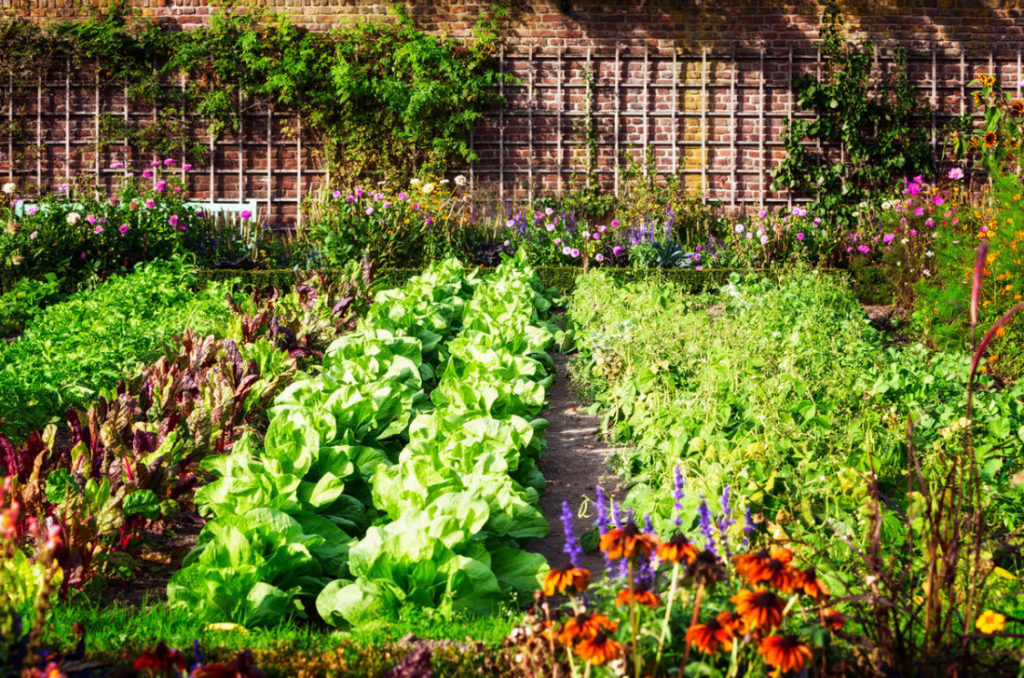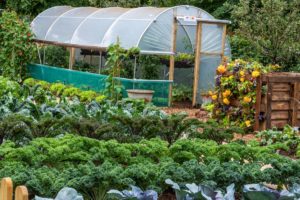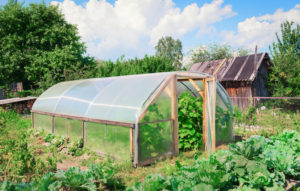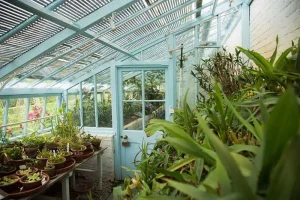Companion planting is an ancient agricultural practice that has been used for centuries to improve crop health and productivity.
By strategically placing certain plants together, farmers can create a synergy that enhances the growth and yield of their crops.
This technique not only boosts crop yields but also promotes soil health and reduces pests and diseases.
We will explore the art of companion planting and provide actionable tips for gardeners and farmers to improve their crop production and profitability.
So, let’s dive in!
Diversify Your Plantings
Companion planting involves growing multiple crops together, each with their own unique characteristics and benefits. By diversifying your plantings, you can create a more resilient and productive garden.
By growing multiple crops together, each with their own unique characteristics and benefits, you can create a more balanced and thriving ecosystem.
For example, planting marigolds with tomatoes can help deter pests and improve soil health, while intercropping beans with corn and squash can promote pollination and increase crop yields.
Planting a variety of crops can help mitigate the risk of crop failure due to pests, diseases, or environmental factors, ensuring a more consistent and abundant harvest.
By incorporating companion planting into your gardening strategy, you can create a more sustainable and thriving ecosystem that benefits both you and the environment.
Choose Complementary Plants
Select plants that have complementary growth habits, nutrient requirements, and pest susceptibilities. For example, planting legumes with corn and beans can provide a nitrogen-fixing benefit, while planting tomatoes with basil can repel pests and improve flavor.
When selecting complementary plants, it’s essential to choose those with complementary growth habits, nutrient requirements, and pest susceptibilities.
This approach can provide numerous benefits for your garden.
For example, planting legumes, such as beans or peas, with corn can provide a nitrogen-fixing benefit, as legumes have the ability to convert atmospheric nitrogen into a form usable by plants.
This can improve the overall fertility of the soil and reduce the need for synthetic fertilizers.
Planting tomatoes with basil can provide a double benefit: basil can repel pests that are attracted to tomatoes, such as whiteflies and aphids, while also improving the flavor of the tomatoes.
By choosing complementary plants, you can create a more balanced and productive garden that requires fewer inputs and produces more bountiful harvests.
Improve Soil Health
Companion planting can improve soil health by creating a diverse and dynamic ecosystem. This can lead to better soil structure, increased organic matter, and improved nutrient cycling.
Companion planting is a powerful tool for improving soil health and creating a thriving, dynamic ecosystem.
By pairing different plants together, you can enhance soil structure, increase organic matter, and promote effective nutrient cycling.
Here’s how
When you plant different species together, they complement each other’s growth habits and provide a diverse range of benefits.
For example, deep-rooted plants like beans and carrots can break up compacted soil and bring up nutrients from deeper layers, while shallow-rooted plants like lettuce and spinach can help to shade and protect the soil from erosion.
This diversity of roots and canopy covers creates a more stable and resilient ecosystem.
Moreover, companion planting can increase the amount of organic matter in the soil.
Legumes like beans and peas have nodules on their roots that host beneficial bacteria, which convert atmospheric nitrogen into a form that plants can use.
This not only improves soil fertility but also adds organic matter to the soil as the legumes decompose.
Similarly, plants like comfrey and alfalfa are excellent at fixing nitrogen and other nutrients, which benefits the entire soil ecosystem.
Companion planting can improve nutrient cycling.
Some plants, like tomatoes and basil, have a symbiotic relationship that benefits both species.
The tomato plant provides a structure for the basil to climb, while the basil repels pests that might harm the tomato plant.
This mutualistic relationship can lead to more efficient nutrient uptake and better soil health overall.
Companion planting is a simple yet powerful technique for improving soil health.
By creating a diverse and dynamic ecosystem, you can increase soil fertility, add organic matter, and improve nutrient cycling.
Companion planting is an effective and simple technique for improving soil health in your garden or landscape.
By choosing the right plants to grow together, you can create a diverse and dynamic ecosystem that promotes soil fertility, organic matter addition, and efficient nutrient cycling.
One of the primary benefits of companion planting is the creation of organic nodules on plant roots, which host beneficial bacteria that convert atmospheric nitrogen into a form that plants can use.
Legumes such as beans and peas are excellent examples of plants that produce these nodules, and they are excellent choices for improving soil fertility.
Other plants like comfrey and yarrow have deep taproots that bring up nutrients from deeper in the soil, making them available to other plants.
Another key benefit of companion planting is the addition of organic matter to the soil.
Some plants, such as nasturtiums and buckwheats, have extensive leaf networks that trap and break down organic matter, adding it to the soil.
This organic matter not only improves soil structure but also provides nutrients for beneficial microorganisms, leading to a more vibrant and diverse ecosystem.
Companion planting also promotes efficient nutrient cycling by providing a variety of plant types that can take advantage of different nutrients at different times.
For example, early-spring crops like lettuce and spinach can benefit from nitrogen-fixing legumes, while warm-season crops like tomatoes and peppers can benefit from nitrogen-rich leafy greens like buckwheat and comfrey.]]
When it comes to improving soil health, companion planting is a powerful tool that can lead to a diverse and dynamic ecosystem.
By incorporating a variety of plant species into your garden or farm, you can create a more efficient nutrient cycling system, improved soil structure, and increased organic matter in the soil.
One of the key benefits of companion planting is the addition of organic matter to the soil.
Plants like nasturtiums and buckwheats have extensive leaf networks that trap and break down organic matter, adding it to the soil.
This organic matter not only improves soil structure but also provides nutrients for beneficial microorganisms, leading to a more vibrant and diverse ecosystem.
Another important benefit of companion planting is the promotion of efficient nutrient cycling.
By providing a variety of plant types that can take advantage of different nutrients and microclimates, companion planting can optimize nutrient use and reduce the need for synthetic fertilizers.
This is especially true when plants like comfrey and beans are incorporated into the system, as they are able to fix nitrogen and other nutrients in the soil.
Companion planting can also lead to improved soil structure and water infiltration.
By incorporating plants like clover and rye, which have extensive root systems and are able to break up compacted soil, you can improve soil aeration and drainage.
This can lead to healthier plants and better water management, especially in areas with limited irrigation.
Overall, incorporating companion planting into your garden or farm can have a significant impact on soil health, leading to improved structure, increased organic matter, and more efficient nutrient cycling.
By using a diverse range of plants, you can create a vibrant and dynamic ecosystem that will improve soil health and overall garden productivity.]]>
Companion planting is an effective technique to enhance soil health, structure, and nutrient cycling in your garden or farm.
By strategically placing different plant species together, you can create a diverse and thriving ecosystem that optimizes nutrient use, improves soil structure, and promotes healthy water management.
The benefits of companion planting are numerous and can have a significant impact on your soil and overall garden productivity.
One of the primary advantages of companion planting is the improvement of soil structure.
By incorporating plants like clover and rye, which have extensive root systems, you can break up compacted soil and improve soil aeration and drainage.
This leads to healthier plants, better water management, and reduced soil erosion.
Companion planting can increase the amount of organic matter in your soil, which improves its structure, fertility, and water-holding capacity.
Moreover, companion planting can enhance nutrient cycling and availability.
For example, legumes, such as beans and peas, have nodules on their roots that host beneficial bacteria that fix atmospheric nitrogen into the soil.
This reduces the need for synthetic fertilizers and improves soil fertility, ultimately leading to healthier and more productive plants.
Other plant species, like marigolds and nasturtiums, also provide biological control of pests and diseases, reducing the need for chemical pesticides and preserving soil health.
Furthermore, companion planting promotes healthy water management.
By combining plants with different water requirements, you can create a dynamic and efficient water cycle within your soil.
For instance, plants like mint and basil require less water, while corn and squash require more.
By interspersing these plants, you can optimize water use, prevent waterlogged soil, and prevent drought stress.
By incorporating plants that attract beneficial insects, such as bees and butterflies, into your garden, you can enhance pollination and improve overall plant health.]]
Improve Soil Health with Companion Planting
Companion planting is a powerful technique for improving soil health by creating a diverse and dynamic ecosystem.
By pairing plants with complementary growth habits, you can enhance soil structure, increase organic-holding capacity, and promote better nutrient cycling and availability.
For example, legumes like beans and peas host beneficial bacteria in their roots that convert atmospheric nitrogen into a form usable by plants, reducing the need for synthetic fertilizers and improving soil fertility.
Other plants like marigolds and nasturtiums attract beneficial insects, such as bees and butterflies, which enhance pollination and improve overall plant health.
Incorporating these plants into your garden can also help prevent drought stress by creating a more resilient soil ecosystem.
By implementing companion planting in your garden, you can improve soil health and create a thriving, productive, and sustainable growing space.
Enhance Pest Management
By planting multiple crops together, you can create a more diverse and resilient pest management system. For example, planting marigolds with tomatoes can repel nematodes, while planting garlic with roses can repel aphids.
Enhance Pest Management: Planting multiple crops together is an effective way to create a more diverse and resilient pest management system.
By choosing companion plants that have natural pest-repelling properties, you can significantly reduce the use of chemical pesticides and protect your crops from harmful pests.
For example, planting marigolds with tomatoes can help repel nematodes, which are microscopic worms that can damage tomato plants.
Marigolds release chemicals that repel nematodes, reducing the risk of nematode infestation.
Similarly, planting garlic with roses can help repel aphids, which are small, soft-bodied insects that can damage rose bushes.
Garlic contains compounds that repel aphids and other pests, making it a natural and effective pest control solution.
By planting multiple crops together and selecting companion plants with pest-repelling properties, you can create a more sustainable and effective pest management system that benefits both your plants and the environment.
Increase Yields
Companion planting can increase yields by providing better pollination, improved soil health, and enhanced pest management. For example, planting buckwheat with potatoes can improve pollination and increase yield.
Companion planting is a powerful technique to increase yields in your garden.
By selecting the right combinations of plants, you can create a synergy that enhances growth, health, and productivity.
One effective method is to plant buckwheat with potatoes.
Buckwheat, as a cover crop, can improve pollination and increase the yield of your potato crop.
The buckwheat provides a source of nectar for bees and other pollinators, which helps to increase the number of fruit set and eventually, the size and number of tubers.
The buckwheat can improve soil health by fixing nitrogen and adding organic matter, creating a better environment for potatoes to grow.
This combination also helps to manage pests, as the buckwheat can attract beneficial insects like ladybugs and lacewings, which can help to control aphids and other pests that can damage potato crops.
By incorporating companion planting into your gardening strategy, you can experience increased yields, healthier plants, and a more balanced and productive garden ecosystem.
Improve Disease Resistance
Some plants have natural disease-resistance properties that can be enhanced by companion planting. For example, planting nasturtiums with cabbage can improve disease resistance in the cabbage.
By strategically placing certain plants together, you can take advantage of their natural disease-resistance properties to improve the health of your entire garden.
For example, planting nasturtiums with cabbage is a great way to boost disease resistance in the cabbage.
Nasturtiums have natural properties that repel pests and diseases, and their presence can help protect the cabbage from harmful pathogens.
This technique is known as companion planting, and it’s a simple and effective way to improve disease resistance in your plants.
By choosing the right combination of plants and following some basic guidelines, you can create a healthy and thriving garden that’s less susceptible to disease.
Improve Drought Tolerance
Companion planting can improve drought tolerance by creating a more diverse and dynamic ecosystem. For example, planting comfrey with vegetables can improve soil moisture retention.
Companion planting is a powerful technique for improving drought tolerance in your garden.
By pairing different plants together, you can create a more diverse and dynamic ecosystem that is better equipped to handle periods of drought.
For example, planting comfrey with vegetables can improve soil moisture retention.
Comfrey’s deep-reaching roots bring up nutrients and water from the subsoil, which benefits the surrounding plants.
The mulch from comfrey’s leaves helps to retain moisture in the soil, allowing your vegetables to thrive even during periods of drought.
This strategy not only improves drought tolerance but also enhances soil health, promotes biodiversity, and increases crop yields.
By incorporating companion planting into your gardening practices, you can create a more resilient and sustainable growing system that is better able to withstand the challenges of drought.
Create a More Biodiverse Garden
Companion planting can create a more biodiverse garden, which can lead to a healthier and more resilient ecosystem. For example, planting beans with corn and squash can create a complementary polyculture that supports a variety of beneficial insects and microorganisms.
Create a More Biodiverse Garden: Companion planting is a powerful technique for creating a more biodiverse garden, which can lead to a healthier and more resilient ecosystem.
By choosing the right combination of plants, you can support a variety of beneficial insects and microorganisms, enhance soil health, and increase overall ecosystem resilience.
For example, planting beans with corn and squash creates a complementary polyculture that supports a diverse array of beneficial insects and microorganisms.
The beans provide nitrogen for the corn and squash, while the corn provides support for the beans and squash.
This interdependence creates a balanced and thriving ecosystem that is more resistant to pests and diseases.
The diverse array of plants attracts beneficial insects such as ladybugs and lacewings, which prey on harmful pests.
By incorporating companion planting into your gardening strategy, you can create a more biodiverse and resilient ecosystem that requires fewer inputs and is better able to withstand environmental stressors.
Want More? Dive Deeper Here!
Hey there! If you’re the type who loves going down the rabbit hole of information (like we do), you’re in the right spot. We’ve pulled together some cool reads and resources that dive a bit deeper into the stuff we chat about on our site. Whether you’re just killing time or super into the topic, these picks might just be what you’re looking for. Happy reading!
- Broadwater County Blog – Broadwater County Extension | Montana State University
- Grow a more productive garden with a little imagination and hardworking plant combinations | Illinois Extension | UIUC
- pivotid.uvu.edu – Square Foot Gardening How To Grow Healthy Organic Vegetables The Easy Way Including Companion Planting Intensive Vegetable Growing Methods Gardening Techniques 6
- Plant a Three Sisters Garden: Corn, Beans, and Squash | The Old Farmer’s Almanac






